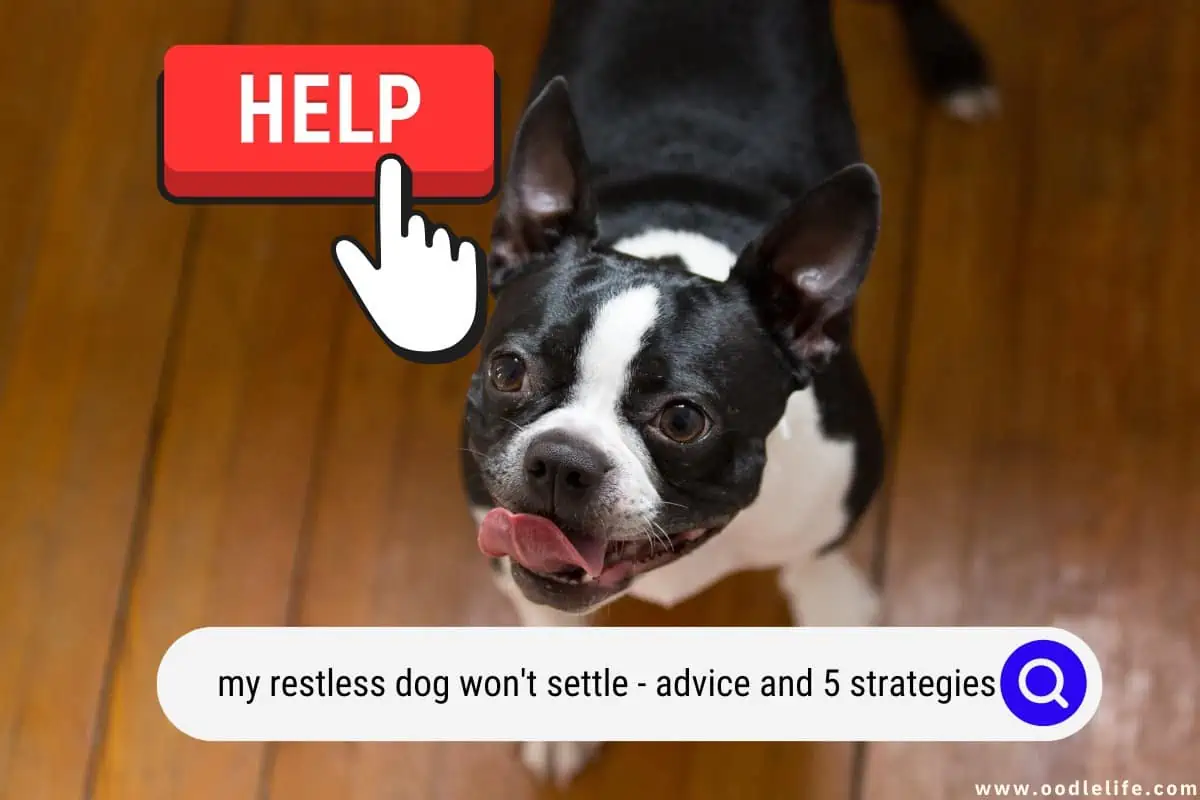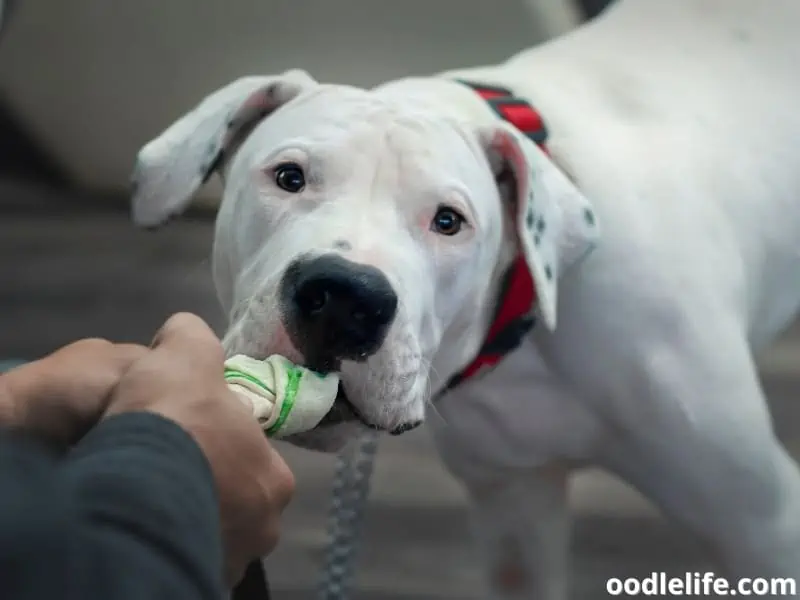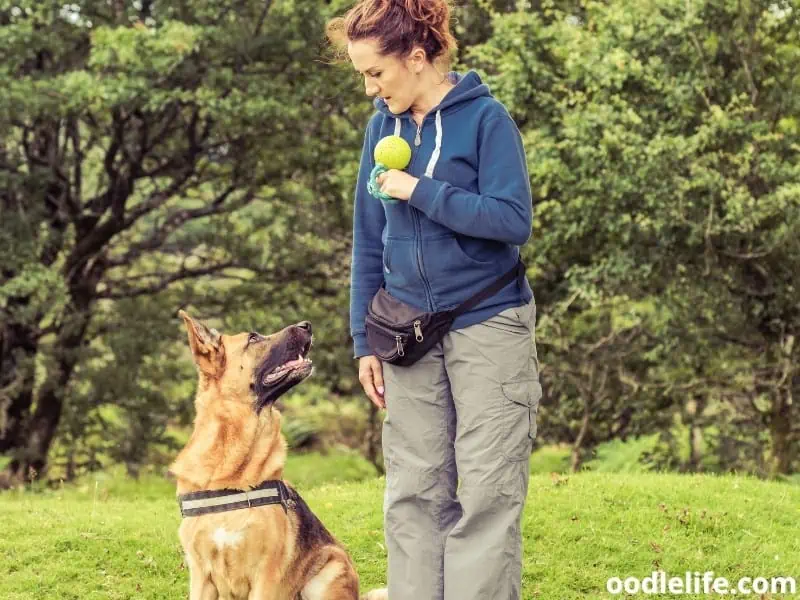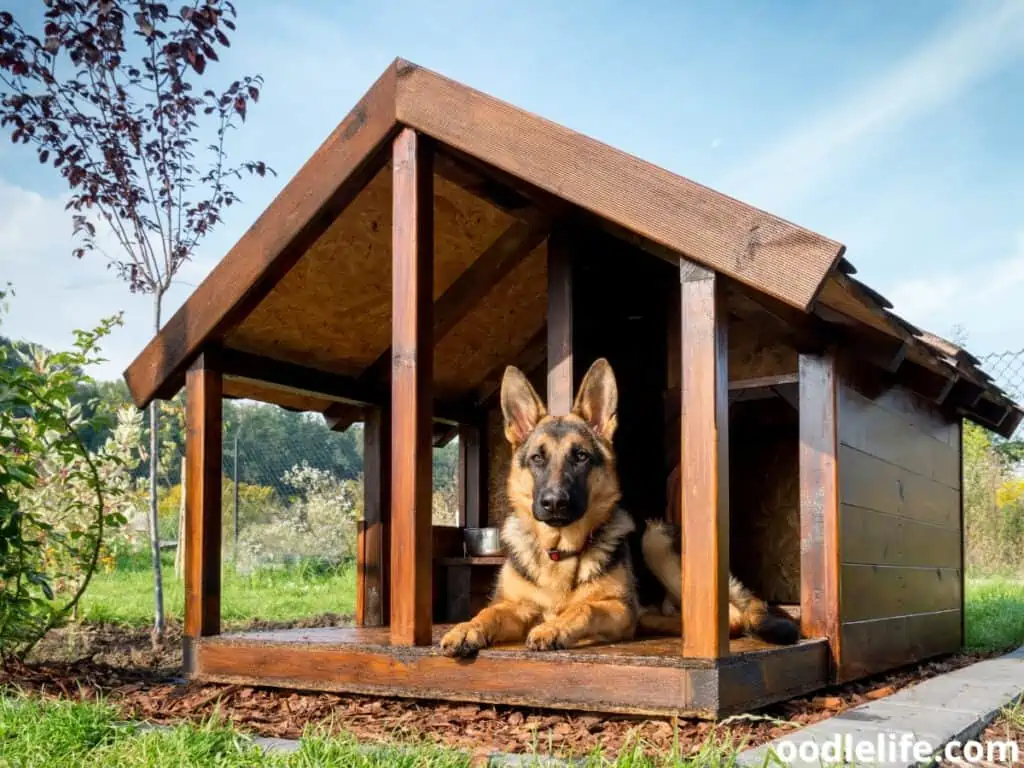Help! My Restless Dog Won’t Settle (Advice and 5 Strategies)
Is your dog forever pacing around the house? Are they constantly underfoot? Do they bark at the slightest noise?
Does it seem like they just can’t settle down? Normal dog behaviors are at the root of all these actions, but they’ve turned into something that’s not healthy.

We all want our animals to be happy, healthy, and safe. Seeing a restless dog that won’t settle can leave you feeling restless too. Good thing there are things you can do to help alleviate your dog’s stress.
Here’s advice and five strategies to help your restless dog that just won’t settle:
Reasons Why Your Dog Is Restless
Before you choose a strategy to combat your dog’s restlessness, you should understand the cause of it. Some of these strategies address multiple causes, but not all do. It’ll make things easier for you and your pet if you get to the root of the problem.
Observe your dog’s behavior. Do they become restless at the same time each day? Is there an environmental trigger?
Are they bored? Lonely? Afraid? Let’s look at the most common causes of restlessness together:
1. Not Enough Mental Stimulation
Pet owners know to exercise their dogs’ bodies. They don’t always know to exercise their dog’s minds, which leads to restlessness. Mental stimulation is the easiest dog need to overlook, and it can lead to many problems.

If your dog is bored, it’ll find a way to entertain itself. Its entertainment manifests in heavily chewed shoes and torn toilet paper–not the most ideal situation.
2. Not Enough Physical Stimulation
Like humans, if dogs don’t get enough physical stimulation throughout the day, they become restless. The amount of exercise your dog needs varies depending on breed and age.

Even Yorkies need at least 30 minutes of walking every day. A tired dog is a good dog, so make time for a thorough doggie workout. What that looks like varies from breed to breed and from dog to dog.
Do what works best for your pup.
3. Diet
There are two facets to this factor: diet quality and feeding time. You need to be sure your dog’s getting enough food and that they’re eating healthy. I’m sure you can imagine how uncomfortable it is to try to rest on an empty stomach.

It’s better to avoid dog food high in sugar or carbs, too. Take note of the time of day when you feed your dog. Food gives them energy, so they can’t eat and go directly to sleep.
A slight adjustment to this schedule could have big results.
4. Anxiety
Anxiety is not an uncommon cause for their restlessness. Anxiety in dogs presents itself in various ways, such as pacing, panting, high alertness, barking, and restlessness. Each animal is different, so you’ll have to rely on personal experience to identify it.

You know your dog best.
5. Pain/Sick/Overheated
Bodily pain, illness, or overheating can cause your dog to become unsettled. It’s hard for them to get comfortable in a hot room, with a hurt paw, or with an upset stomach. It’s best to consult a veterinarian if any of these problems are plaguing your pooch.

5 Strategies to Combat Restlessness
Now that you know the cause, you can find the best solution. We’re going to focus on strategies to combat restlessness that have to do with behavior. You definitely should make sure there’s nothing medical affecting your dog before trying to correct its behavior.
1. Walks/Runs
This seems like an obvious way to deal with your dog not having enough physical stimulation. It’s easy to misjudge how much exercise your dog needs, though. That’s especially true if you’ve never owned a dog before.

The quality of their exercise matters just as much, if not more, than the quantity. It may better serve your dog to let them run loose at the dog park for 20 minutes than to take them on an hour walk. It depends on the animal.
Getting outside also allows your dog to sniff. Sniffing is an excellent way to mentally stimulate your dog. If you take multiple walks in a day, be sure at least one of them allows for some downtime to sniff.
2. Games
Games are a great way to mentally and physically stimulate your dog and create a stronger bond with them. They’re social creatures like us, so they need to interact with others every day. It doesn’t matter what you play, as long as your dog is happy to engage with you.

Here are some ideas for you to get started:
- Fetch
- Tug of War
- The Name Game
- Find the Toy/Treat
- Hide and Seek
- Obstacle Course
- Agility Training
Always pay attention to how your dog is feeling during these activities. Don’t try to force any game on them that they’re not interested in playing. That’s a quick way to lose trust and break your bond with them.
3. Enrichment Toys
Giving your dog an enriching toy is another great way to mentally stimulate them. Most toys can do this, but there are toys specifically designed for enrichment. There are so many puzzle toys out there that can keep your dog entertained for hours.

You can buy food dishes with puzzles or obstacles, so even mealtime can become an enriching activity. These toys are nice because they mentally stimulate your dog without physically stimulating them. It’s a less demanding way to address restlessness.
4. Training
You can quite literally train your dog to settle down, or you can use training as a way to burn off energy. Teaching your dog to settle down, relax, or go to bed will be easy with a solid foundation.

You’ll have to start at the beginning if you haven’t worked with your dog on commands much. Your dog needs to know a release word and how to lie down before learning this.
Training itself is an effective way to get your dogs to work out their minds and bodies. It’s an excellent way to bond with your canine companion, too. You can work on any trick or command, not just settle down.
5. Creating a Safe Space
Creating a safe place for your dog is the best way to address restlessness due to anxiety. The safe space can be a kennel, a crate, a small room, or any number of things. All that matters is that it’s a quiet place away from everyone.

Your dog should always have access to this space so they can self-soothe when needed.
You can easily develop a sleep routine using the safe space as well. It helps your dog understand when it’s time to calm down for the night.
Conclusion
We’ve covered a lot of ground today. We talked about the main reasons for your dog’s restlessness and the best strategies to address each one. Your dog may not be getting enough exercise or may be injured.
They might be anxious or not getting a well-balanced diet.
You now know several methods to address the five problems that might lead to a restless dog. A combination of more walks, games, toys, training, and different diet can nip them in the bud. As the fur parent, you know your fur-baby best.
Use your knowledge (and these five strategies) to help your restless dog finally settle down.